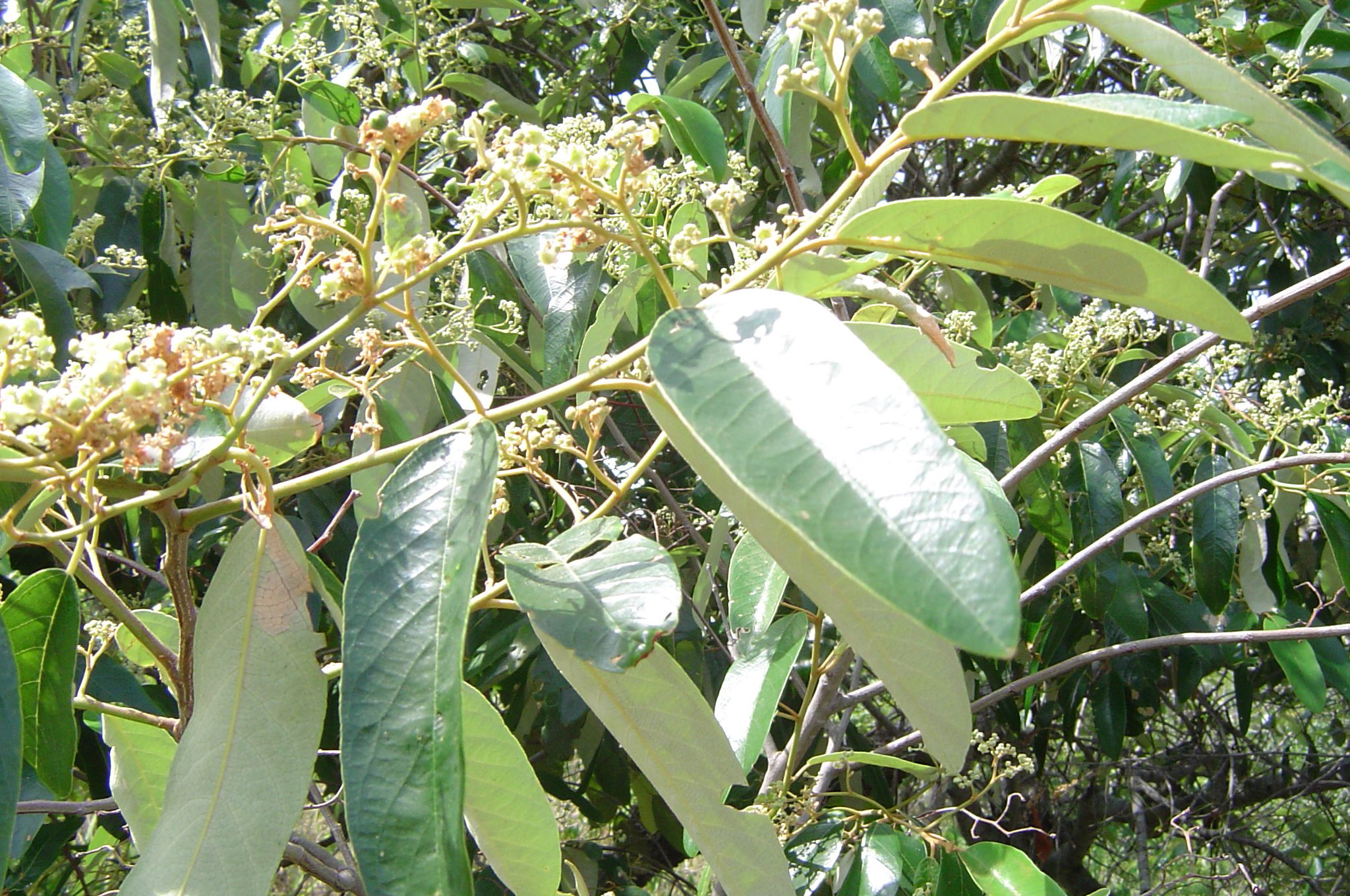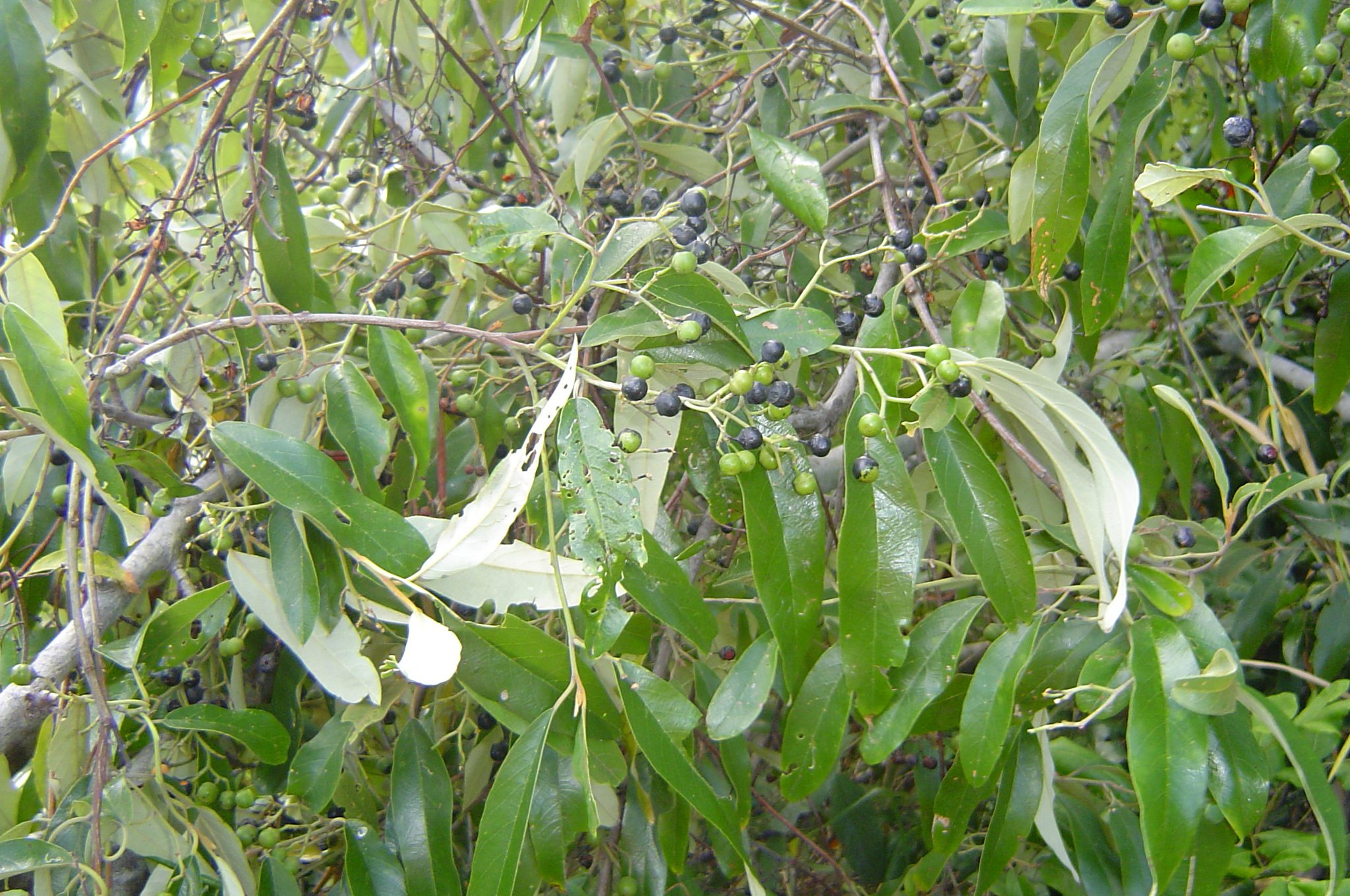Red ash
Alphitonia excelsa, Fam. Rhamnaceae



Small to medium tree with a grey bark, smooth on young trees but fissured and rough on large trees, and conspicuous crown because of the dark green upper surface and the silvery white under surface of the leaves.
| Weed Category: | |
| Weed: | No |
| Form or habit: | Small tree, Med tree |
| Family: | Rhamnaceae |
| Leaf: | Simple, alternate and somewhat two ranked, entire, broadly elliptical to oblong ovate, 5-14cm long, glabrous, glossy dark green above and with a dense cover of minute white hairs below. Brown hairy buds. |
| Flower conspicuous: | Conspicuous |
| Flower colour: |
Cream |
| Flower description: | Short, axillary panicles of small, cream, fragrant flowers. Summer to winter. |
| Fruit conspicuous: | Conspicuous |
| Fruit colour: |
Black |
| Fruit: | |
| Fruit description: | Black, globular, dry to thinly succulent, drupe-like fruit, 6-10mm in diameter. A ring-like scar is clearly visible around the base. Fruit contains two cells with a powdery red covering, each cell contains a single brown seed covered with a thin orange red skin. Any month of the year. |
| Habitat: | Littoral rainforest, open forest, rainforest, woodland. |
| Distribution | Queensland, New South Wales, Northern Territory, Western Australia, New Guinea, Malesia, Asia. |
| Food source for: | Fruit and/or seed eaten by the grey headed flying fox, brown cuckoo dove, white headed pigeon, sulphur crested cockatoo, Australian king parrot, pale headed rosella, eclectus parrot, Lewin's honeyeater, noisy friarbird, varied triller, olive backed and yellow orioles, pied currawong, green catbird, paradise riflebird, regent and satin bowerbirds and silvereye. Nectar eaten by the brown, dusky, red headed and singing honeyeaters. Larval food plant of the copper jewel, moonlight jewel, fiery jewel, indigo flash and small green banded blue butterflies, and of the moths Aenetus mirabilis (a splendid ghost moth), Bucculatrix sp., Carmenta chrysophanes (a clearwing moth), Casbia rectaria, Leucoptera sp. and Opodiphthera astrophela (an emperor moth). |
| Toxicity: | No toxicity known |
| Origin: | Australia, New Guinea, Malesia, Asia. |
| Notes: | Quick growing, hardy tree suitable for a wide range of situations although prefers well drained spils. Moderately drought tolerant. Germination is very slow, cracking the seed coat or soaking in boiling water for one minute will improve germination. Seed can be stored at room temperature for several years. Cuttings strike readily. The leaves and bark contain saponin and have been used to stupefy fish. Crushed leaves can be used instead of soap. With appropriate mordants it produces red brown or orange yellow dyes. Medicinal uses by Aborigines and early settlers included: bathing sore heads with a solution of the leaves crushed in water, drinking a bark and wood decoction for a tonic, gargling with a bark and wood decoction to relieve toothache, rubbing infusions of bark, roots and wood on the body for aches and pains, chewing young leaf tips to relieve an upset stomach and applying leaves to sore eyes. The timber is pale pink when first cut, changing to orange red with age, strong and fairly durable in the ground. |
| Information sources: | Melzer R. & Plumb J. (2007) Plants of Capricornia. |



